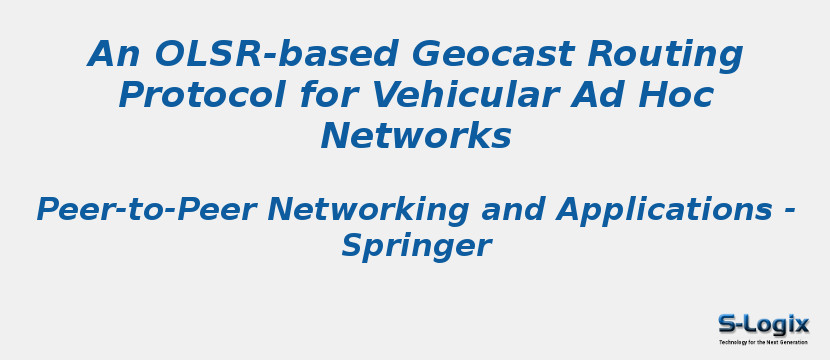Research Area: Vehicular Ad Hoc Networks
In some Vehicular Ad Hoc Networks (VANETs) applications, the geocast routing protocol is used for data transmission from a source vehicle to a group of vehicles located in a common region. Efficient data transmission to the destination region is one of the critical challenges of geocast routing protocols. In this research, the geocast routings are considered that exploit rateless coding to improve the reliability, and so packet delivery ratio. Some of these geocast routing methods use flooding schemes to deliver the messages to the destination region. However, in order to cut high overheads caused by flooding schemes, the routing protocols that use unicast routes for data delivery have been taken into account. In this way, recent geocast routing protocols exploit on-demand unicast routing methods such as Ad-hoc On-Demand Distance Vector (AODV) to deliver the packets to the destination region and then broadcast them in that area. However, the packet delivery ratio and the delay of those methods are respectively lower and higher than flooding-based methods. This paper proposes to exploit the table-driven Optimized Link State Routing (OLSR) protocol to deliver the messages to the destination region. To customize the OLSR protocol for geocasting, we propose a number of modifications to message flows and data exchanges. Compared to on-demand geocast protocols, OLSR imposes lower message delay and delivers more messages to the destination region at a higher overhead expense. To overcome this overhead, we also propose algorithms to adjust the control message intervals of the OLSR protocol in each node. Simulation results show that our OLSR-based protocol demonstrates better performance in terms of delay and packet delivery ratio than those of the traditional AODV-based method and CALAR-DD protocol regarding various vehicles densities, vehicles velocities, message sizes, and destination region sizes. Compared to the traditional OLSR, using the tuned OLSR-based method has also significantly reduced the signaling overhead costs.
Keywords:
Author(s) Name: Maryam Ataei Kachooei, Faramarz Hendessi, Behrouz Shahgholi Ghahfarokhi & Mostafa Nozari
Journal name: Peer-to-Peer Networking and Applications
Conferrence name:
Publisher name: Springer
DOI: 10.1007/s12083-021-01246-8
Volume Information:
